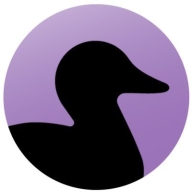

SonarQube Server and Coverity Static are both leading tools in the code analysis market. SonarQube is often preferred for its broad language support and open-source options, whereas Coverity is favored for its strong security features, despite a higher cost.
Features:SonarQube Server supports over 20 programming languages and offers extensive integration with CI/CD tools. It includes custom coding rules and a vibrant open-source community that provides features like elastic search, dependency search, and graphical dashboards. Coverity Static excels in memory-related analysis and critical vulnerability identification. It is known for its advanced bug detection and secure coding enforcement.
Room for Improvement:SonarQube users seek enhancements in security features, API documentation, and third-party tool integration, including JIRA. Improvements in scanning speed and reducing false positives are also desired. Coverity users look for a simpler user interface, lower false positive rates, software composition analysis integration, and broader IDE support.
Ease of Deployment and Customer Service:SonarQube's deployment is praised for its flexibility with on-premises and hybrid cloud options, supported by an active community and various online resources. Coverity also provides deployment flexibility but requires more technical staff involvement for support, given its complexity. Both tools offer reliable deployment processes across different hosting environments.
Pricing and ROI:SonarQube Server is considered cost-effective with its open-source version, providing considerable ROI related to code quality and fewer bugs. Coverity Static, while more expensive, offers significant value in its superior security flaw detection, justifying its cost for achieving bug-free code quality improvements and ROI.
| Product | Market Share (%) |
|---|---|
| SonarQube Server (formerly SonarQube) | 19.7% |
| Coverity Static | 6.0% |
| Other | 74.3% |


| Company Size | Count |
|---|---|
| Small Business | 8 |
| Midsize Enterprise | 6 |
| Large Enterprise | 31 |
| Company Size | Count |
|---|---|
| Small Business | 32 |
| Midsize Enterprise | 21 |
| Large Enterprise | 75 |
Coverity gives you the speed, ease of use, accuracy, industry standards compliance, and scalability that you need to develop high-quality, secure applications. Coverity identifies critical software quality defects and security vulnerabilities in code as it’s written, early in the development process, when it’s least costly and easiest to fix. With the Code Sight integrated development environment (IDE) plugin, developers get accurate analysis in seconds in their IDE as they code. Precise actionable remediation advice and context-specific eLearning help your developers understand how to fix their prioritized issues quickly, without having to become security experts.
Coverity seamlessly integrates automated security testing into your CI/CD pipelines and supports your existing development tools and workflows. Choose where and how to do your development: on-premises or in the cloud with the Polaris Software Integrity Platform (SaaS), a highly scalable, cloud-based application security platform. Coverity supports more than 20 languages and 200 frameworks and templates.
SonarQube Server enhances code quality and security via static code analysis. It detects vulnerabilities, improves standards, and reduces technical debt, integrating into CI/CD pipelines.
SonarQube Server is a comprehensive tool for enhancing code quality and security. It offers static code analysis to identify vulnerabilities, improve coding standards, and reduce technical debt. By integrating into CI/CD pipelines, it provides automated checks for adherence to best practices. Organizations use it for code inspection, security testing, and compliance, ensuring development environments with better maintainability and fewer issues.
What are the key features of SonarQube Server?Many industries implement SonarQube Server to uphold coding standards, maintain security protocols, and streamline their software development lifecycle. In sectors like finance and healthcare, adhering to regulations and ensuring reliable software is critical, making SonarQube Server invaluable. It is often integrated into CI/CD pipelines, ensuring that code changes meet set standards before deployment. This approach enhances productivity and maintains compliance with industry-specific requirements.
We monitor all Static Application Security Testing (SAST) reviews to prevent fraudulent reviews and keep review quality high. We do not post reviews by company employees or direct competitors. We validate each review for authenticity via cross-reference with LinkedIn, and personal follow-up with the reviewer when necessary.